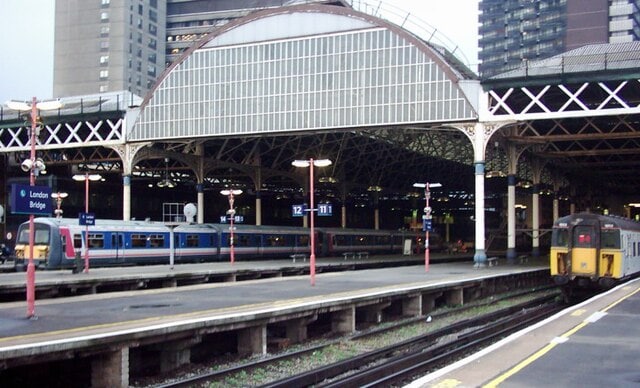London’s oldest train stations are more than just transportation hubs; they’re living history. These architectural marvels have witnessed centuries of change, from the steam age to the modern era.
As gateways to the city, they have welcomed travelers, witnessed historic events, and shaped London’s identity.
Join us as we explore the 10 oldest train stations in London, each with its own story to tell and a unique place in the city’s history.
10. Marylebone Station
Location: Marylebone
Year of Establishment: 1899
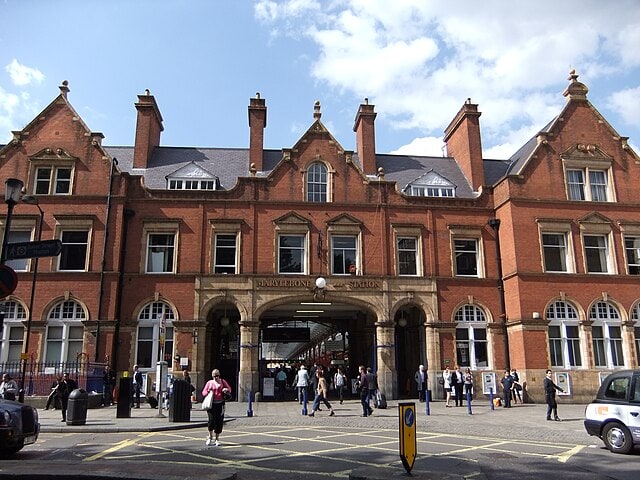
Marylebone Station is a relatively modern station compared to others on the list, known for its elegant architecture. It serves as the terminus for Chiltern Main Line trains to destinations in Buckinghamshire, Oxfordshire, Warwickshire, and Worcestershire.
The station’s architecture features a classic Victorian design, with a spacious concourse and a historic clock tower. Despite its smaller size compared to other major London terminals, Marylebone Station offers a convenient and efficient travel experience for passengers heading to destinations in the West Midlands and beyond.
Did You Know?
Marylebone is the only major London terminal that does not have a direct link to the London Underground. Passengers can access the station via the nearby Baker Street Underground station, which is a short walk away.
9. Blackfriars Station
Location: Blackfriars
Year of Establishment: 1886
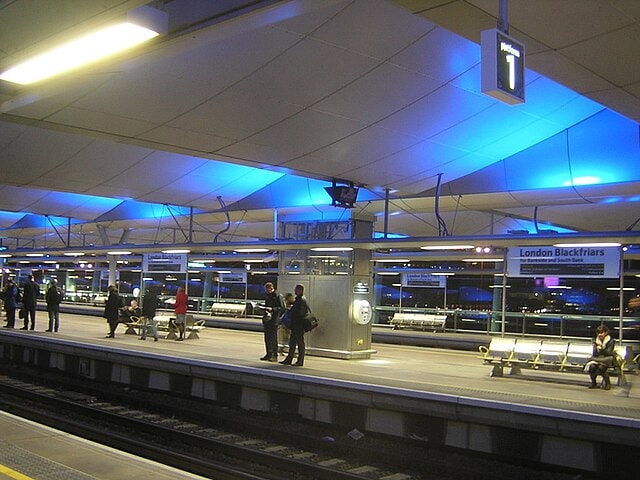
Blackfriars Station is a central London railway terminus and London Underground station located on the River Thames. It serves as a key transportation hub, providing access to both underground and overground trains.
The station’s unique feature is that it spans the entire width of the river, with entrances and exits on both the north and south banks.
Blackfriars Station underwent a major redevelopment between 2009 and 2012, which included the addition of a new roof with solar panels, making it the largest solar-powered railway station in the world.
The station offers stunning panoramic views of the river and the London skyline, making it a popular spot for tourists and photographers.
Did You Know?
The station’s name comes from the nearby Blackfriars Monastery, which was a Dominican friary established in the 13th century. The area was named after the black cappa worn by the friars.
8. Liverpool Street Station
Location: City of London
Year of Establishment: 1874
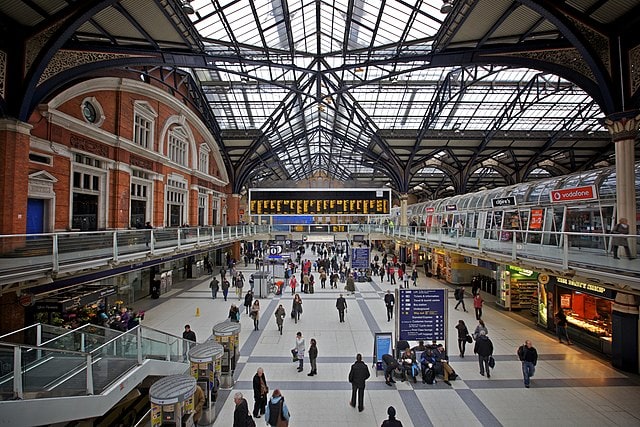
Liverpool Street Station stands as one of London’s busiest railway hubs, facilitating vital connections to the east of England.
The station derives its name from the thoroughfare it graces, a street honoring the British Prime Minister, Lord Liverpool.
Serving as a pivotal point for commuters and travelers alike, this station plays a crucial role in London’s bustling transport network.
Did You Know?
The station was constructed on the grounds of the original Bethlem Royal Hospital, famously known as “Bedlam,” marking the inception of modern psychiatric care and the station’s historical significance.
7. Victoria Station
Location: Victoria
Year of Establishment: 1860
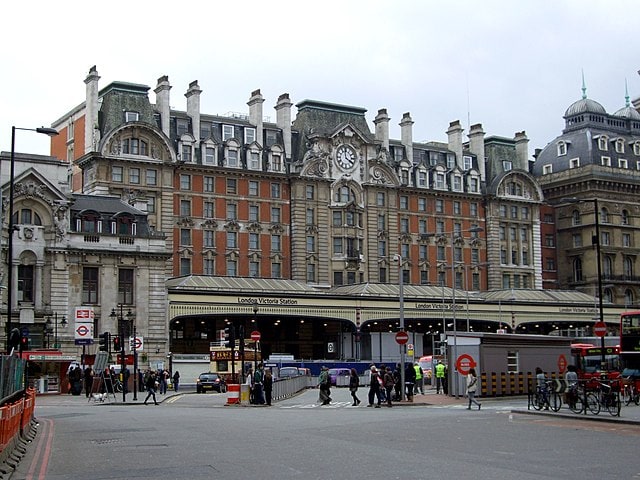
Originally two separate stations for the Brighton Railway and the London, Chatham and Dover Railway, Victoria Station is now one of London’s major railway termini, serving routes to the south and southeast of England.
The station underwent significant redevelopment in the early 20th century to accommodate the increasing demand for rail travel.
Today, Victoria Station is not only a bustling transportation hub but also features a shopping center, restaurants, and a hotel, making it a key destination for both travelers and locals alike.
Did You Know?
The station’s name and location are derived from nearby Victoria Street and Victoria Square, which were named after Queen Victoria.
Victoria Station is known for its distinctive red-brick facade and the iconic Grosvenor Hotel, which is situated above the station concourse and offers luxurious accommodation for travelers.
6. King’s Cross Station
Location: King’s Cross
Year of Establishment: 1852
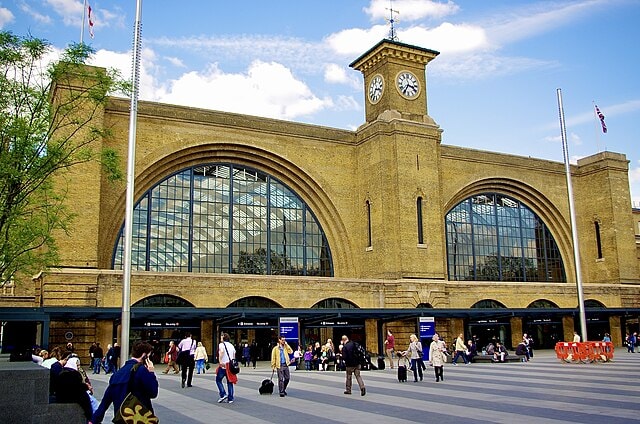
King’s Cross is not only known for its distinctive Victorian architecture but also for its role as a major transportation hub, connecting London with the North of England and Scotland.
The station underwent a significant redevelopment in the early 21st century, which included the restoration of its iconic facade and the construction of a new concourse.
Did You Know?
The station’s Platform 9¾, featured in the Harry Potter series, has become a popular tourist attraction, with a trolley embedded in the wall as an homage to the magical platform from the books and films.
5. Waterloo Station
Location: Waterloo
Year of Establishment: 1848
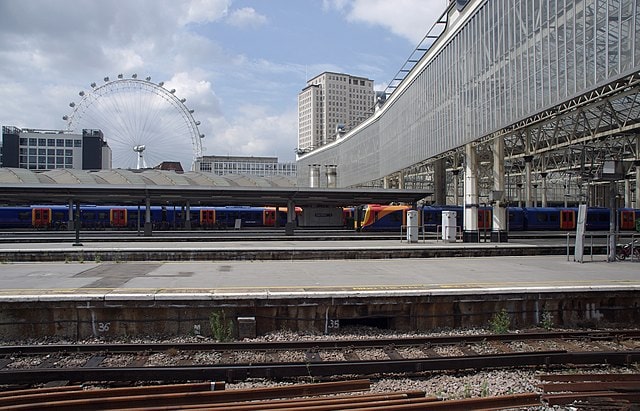
Waterloo Station is the busiest railway station in the UK, serving as a major terminal for trains to the south and southwest of England. It has 24 platforms and handles around 100 million passengers annually.
The station is a central hub for commuters and tourists, offering connections to the London Underground, buses, and taxis. Waterloo is also known for its historic architecture, including the Victory Arch and the famous clock tower.
Did You Know?
The station was named after the Battle of Waterloo, which took place in 1815 and marked the final defeat of Napoleon Bonaparte. Waterloo Station was originally built to serve the London and South Western Railway (LSWR).
The station has been featured in several films and TV shows, including “The Bourne Ultimatum” and “James Bond: Skyfall.”
4. Fenchurch Street Station
Location: City of London
Year of Establishment: 1841
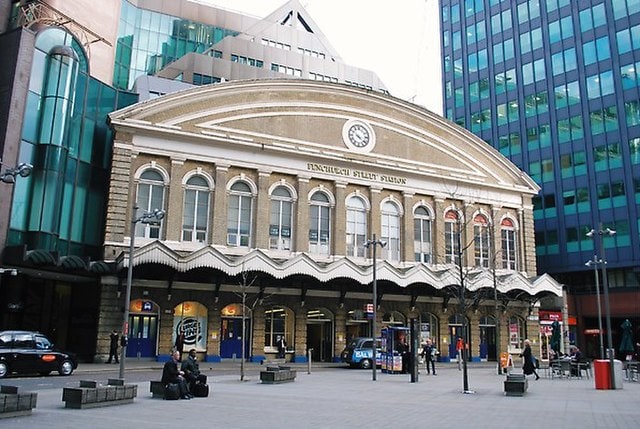
Fenchurch Street Station is a historic railway terminus located in the heart of the financial district of the City of London. It serves as a crucial link for commuters traveling to and from the eastern parts of London and Essex.
The station is known for its distinctive roof structure, which covers the platforms and tracks. Despite its relatively small size compared to other London termini, Fenchurch Street handles a significant amount of commuter traffic, particularly during peak hours.
The station has undergone several renovations and upgrades over the years to accommodate the growing number of passengers using its services.
Today, Fenchurch Street Station continues to play a vital role in London’s commuter network, providing a key transportation hub for thousands of passengers daily.
Did You Know?
The station was originally named “Fenchurch Street” after the nearby church of St Fiacre, which was demolished in the 19th century. It is one of the smallest and most compact of London’s mainline termini.
Despite its size, Fenchurch Street Station has a rich history and has been featured in various works of literature and film. Its location in the heart of the financial district makes it a convenient choice for commuters working in the area.
3. Paddington Station
Location: Paddington
Year of Establishment: 1838

Designed by the renowned engineer Isambard Kingdom Brunel, Paddington Station was originally the London terminus of the Great Western Railway.
The station’s design features a stunning iron and glass roof, which is considered one of the most impressive Victorian-era structures in London.
Paddington Station has played a significant role in the history of rail transport in the UK and continues to be a major hub for both national and international travel.
Did You Know?
The station is famously associated with the fictional character Paddington Bear, who was discovered at the station with a note around his neck that read, “Please look after this bear. Thank you.” This connection has made Paddington Station a popular destination for fans of the beloved children’s character.
2. Euston Station
Location: Euston Road
Year of Establishment: 1837
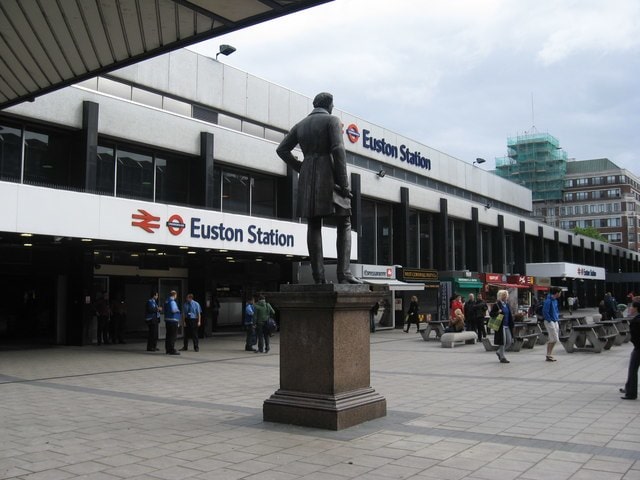
Euston Station is one of London’s major railway termini, serving as the southern gateway to the West Midlands and North West England. It is located in the borough of Camden and is a key hub for both national and international train services.
The station has undergone several major renovations and expansions over the years to meet the growing demand for rail travel.
Did You Know?
Euston was the first intercity railway station in London, serving as the terminus of the London and Birmingham Railway, which was the world’s first long-distance railway to be built entirely with private capital.
The station has a rich history and has been the departure point for many historic journeys, including the funeral train of Queen Victoria in 1901 and the first scheduled passenger train in the world in 1837.
1. London Bridge Station
Location: Southwark
Year of Establishment: 1836
Photo Source: Wikipedia Commons
London Bridge Station is one of the oldest and busiest railway stations in London, serving as a vital transport hub for the city and beyond.
The station has undergone several renovations and expansions over the years, with the current station building opening in 2018 as part of a major redevelopment project.
London Bridge Station is known for its strategic location near the London Bridge, one of the most iconic bridges in the city, and its role in connecting various parts of London.
Did You Know?
The area around London Bridge Station has a rich history, dating back to Roman times when the first bridge was built across the River Thames at this location. The station has been featured in various works of literature and art, reflecting its status as a cultural landmark in London.
Conclusion
These historic train stations in London stand as enduring symbols of the city’s rich railway heritage. From the iconic architecture of Paddington to the bustling platforms of Waterloo, each station tells a story of innovation, travel, and the ever-evolving cityscape.
As we continue to modernize our transportation networks, let us not forget the importance of preserving these historic landmarks that have played such a vital role in shaping London’s identity.



